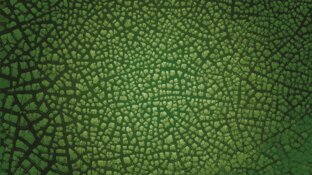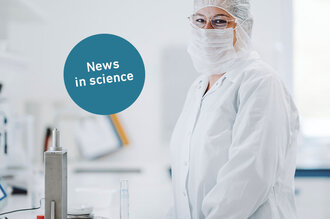Algae
Algae are rich in high-quality proteins, vitamins, and minerals. For thousands of years, people have been using the extra nutritional value of this tiny organism from the water. In practical powder or tablet form, the benefits of algae are now easily accessible to everyone.


Things worth knowing about the algae spirulina & chlorella
The most frequently offered microalgae are spirulina and chlorella, which seem very similar at first glance. But a closer look reveals several small differences. Both are definitely power packages full of healthy nutrients.
Details about Spirulina
Due to the absence of a cell nucleus and a solid membrane, these micro-organisms are actually not plants at all. They are counted as bacteria and grouped here as cyanobacteria. The typical bluish-green colouration gives this algae species not only its name, but also a consistently deep green colour.
The scientific name is actually arthrospira with the sub-species spirulina platensis, spirulina fusiformis and spirulina maxima. Which algae are being taken precisely is really not important, since they are so similar in structure and benefits that even experts can only differentiate them with difficulty.
Spirulina thrives in fresh water as well as in mixed and salt water. The commercial algae are cultivated in large basins with the addition of abundant CO2. The constantly consistent water quality in the breeding basin guarantees products of the highest purity and the highest quality.
In addition, spirulina is low in sugar and highly suitable for diabetics. If you have thyroid problems, you should only use low-iodine products from freshwater cultivation.
The special ingredients of the spirulina algae include:
- the minerals and trace elements magnesium, calcium, zinc, iron, potassium, manganese, selenium and phosphorus
vitamins B1, B2, B3, B5, B6, B9 and beta-carotene as a precursor to vitamin A
easily available and very high-quality proteins (over 50%)
the essential fatty acids Omega 3, gamma-linolenic and alpha-linolenic acid.
Details about Chlorella
Chlorella algae is a pure freshwater algae and is found in almost all inland waters. It has a cell nucleus, and a solid cell wall and is therefore considered a plant. It is also green due to the high proportion of chlorophyll it contains and contributes significantly to the oxygen balance in bodies of water. It was presumably microalgae such as chlorella and spirulina that helped shape the Earth's oxygen atmosphere millions of years ago. Products of the types Chlorella pyrenoidosa or Chlorella vulgaris are usually on offer, which are also very similar. The breeding conditions of the microalgae are much more important than the species. The best water and plenty of food ensure the optimum nutritional value of the product. Algae breeding is considered very simple and corresponds to that of spirulina.
The special ingredients of chlorella algae include
- the minerals and trace elements calcium, iron, magnesium, copper, iodine, phosphorus, potassium, zinc and selenium
vitamins A and beta carotene, B5, B9, B12 (!), C, D, E and K - easily available and very high-quality proteins (over 50%)
the essential amino acids isoleucine, leucine, methionine, phenylalanine, threanine, tryptophane, as well as valine
Things worth knowing about haematococcus Pluvialis
Haematococcus Pluvialis is somewhat rarer but just as interesting. Most people know the reddish algae as the colorant that gives shellfish and many birds – like flamingos – their typical reddish color. Astaxanthin is used to obtain a carotenoid from these microalgae, which can serve as a nutritional supplement in the event of an additional need.
How algae can contribute to health
Chlorella & health
Chlorella is a very well-researched plant that has already delivered good results in studies. In addition to the particularly high nutritional value, a detoxifying effect could also be demonstrated. It can bind heavy metals, to conduct them out of the body, and thus reduce oxidative cell stress. Positive effects were also demonstrated in the acceleration of wound healing and stabilization of the entire immune defense system(1)(2). Products with intact cell walls are particularly suitable for detoxification since they bind the toxins better. However, the nutritional value of the algae decreases slightly with this type of absorption.
Spirulina & health
Spirulina, on the other hand, is considered a nutritional miracle and a great hope of eliminating worldwide malnutrition. The organization IImsam was founded in 2003 in collaboration with the United Nations specifically for this reason. It deals with the cultivation and comprehensive supply of spirulina algae to humans in third-world countries. NASA astronauts will also enjoy the small power packs on future space flights.
(1) www.ncbi.nlm.nih.gov/pubmed/20118630
(2) www.ncbi.nlm.nih.gov/pubmed/19589628
Algae as a dietary supplement
Microalgae differ in certain details, but in their entirety, they cover an enormous spectrum. The high protein content alone is particularly interesting for human nutrition and digestion. Vegans and vegetarians can especially benefit from this. However, these products are also just right for all other health-conscious people who want to eat the most natural dietary supplements possible.
Regular consumption of chlorella or spirulina can help:
- to replenish nutrient deposits
- to ensure a permanent and consistent supply of vitamins and trace elements
- to provide the body with high-quality non-animal protein
- to support detoxification treatments
- to alleviate oxidative cell stress
- to increase strength and performance
- to clean the intestines and rebalance them
Buy spirulina and chlorella in high quality from BIOGENA
BIOGENA knows no compromises when it comes to the quality of its algae. After all, algae absorb pollutants from their surroundings particularly well – a property that can quickly reverse the positive sides of the small nutrient packages. The global search for BIOGENA product development for the "diamonds among algae" was therefore all the more meticulous. True to the motto “Why to seek far afield when there is so much close at hand”, the BIOGENA raw materials experts were finally found at a premium domestic producer.
BIOGENA Spirulina and Chlorella – with premium algae from Austria
BIOGENA Spirulina 400 and Chlorella Pur C plus contain quality-tested premium algae from Austria. The high-quality raw material comes from the Lower Austrian producer Jongerius ecoduna®, which cultivates both its spirulina and chlorella algae in a patented closed-loop glass tube system. This innovative cultivation method not only enables the creation of ideal growth conditions but also protects the microalgae from external influences such as heavy metals, toxins, and pesticides. Only sunlight, selected nutrients and the purest Austrian drinking water are used in domestic microalgae production. The gentle spray drying also preserves the valuable ingredients of the small nutrient packages.
Spirulina capsules, powder, tablets, etc.
If you are looking for a spirulina product on the internet, you can find a wide range of pharmaceutical forms. Capsules, tablets, or powder products are the most common. The advantage of spirulina capsules is that they are characterized by their neutral taste thanks to their encapsulation and the possibility of precise dosing and are easier to take on the go. Capsule products, which are produced at the manufacturing standard as with BIOGENA, also mean that unnecessary additives such as dyes, binding agents, or separating agents are avoided.
Chlorella tablets, powder, capsules, etc.
As with spirulina, powders, tablets, and capsules are also the top performers in chlorella products. Chlorella capsules score highly with their hygienic encapsulation, precise dosing options, and neutral taste. In addition, many consumers generally find taking capsule products to be easier (e.g. easy to take to the office or when traveling).

Overview study: Microalgae – sources of high-quality nutrients
In the search for the “food of the future”, there has been an increasing focus on the benefits of algae. These survivors from a prehistoric age have been used as a food source by humans for a very long time. They are still popular food staples in present-day Japan, where their unique combination of nutrients plays an important role in people’s diets. An overview study published in May 2019 explores the topic of microalgae on the basis of the latest data and underscores their potential as food of the future.
A team of researchers led by Dr. Ines Barkia took a closer look at several types of microalgae, including the well-known genera Chlorella and Spirulina, and documented their nutritional value: microalgae contain a highly beneficial spectrum of biochemical compounds. According to researchers, these primordial plants could become the food of the future. For while the human population is steadily growing, there has been no corresponding increase in the amount of arable land for years. Not even the latest cultivation methods can increase the yield indefinitely. Algae, on the other hand, grow in water and can be cultivated vertically as well as horizontally. They need only a fraction of the water required to grow land crops (let alone livestock), hardly any fertilizers, and no pesticides whatsoever.
However, the researchers point out that algae products also involve a certain risk: they filter out not just the beneficial substances from the water they grow in but also certain harmful substances such as heavy metals.
Algae? Yes, please. But only the best quality.
We want to be absolutely sure that our supplements contain only the very best algae, which is why we have also familiarized ourselves with the algae production process.
Only premium algae produced by the Austrian company Jongerius ecoduna® are used in our algae supplements “Spirulina 400” and “Chlorella Pur C plus”. The top-quality algae are grown in a closed system of glass and stainless steel tubes under optimum conditions. Ultra-pure Austrian tap water, sunlight, and selected nutrients are all that is needed to cultivate extremely pure premium algae all year round – while at the same time preserving resources and protecting the environment to the greatest possible extent.






